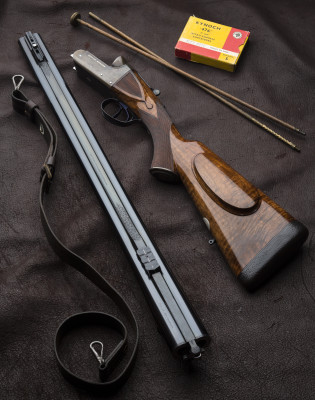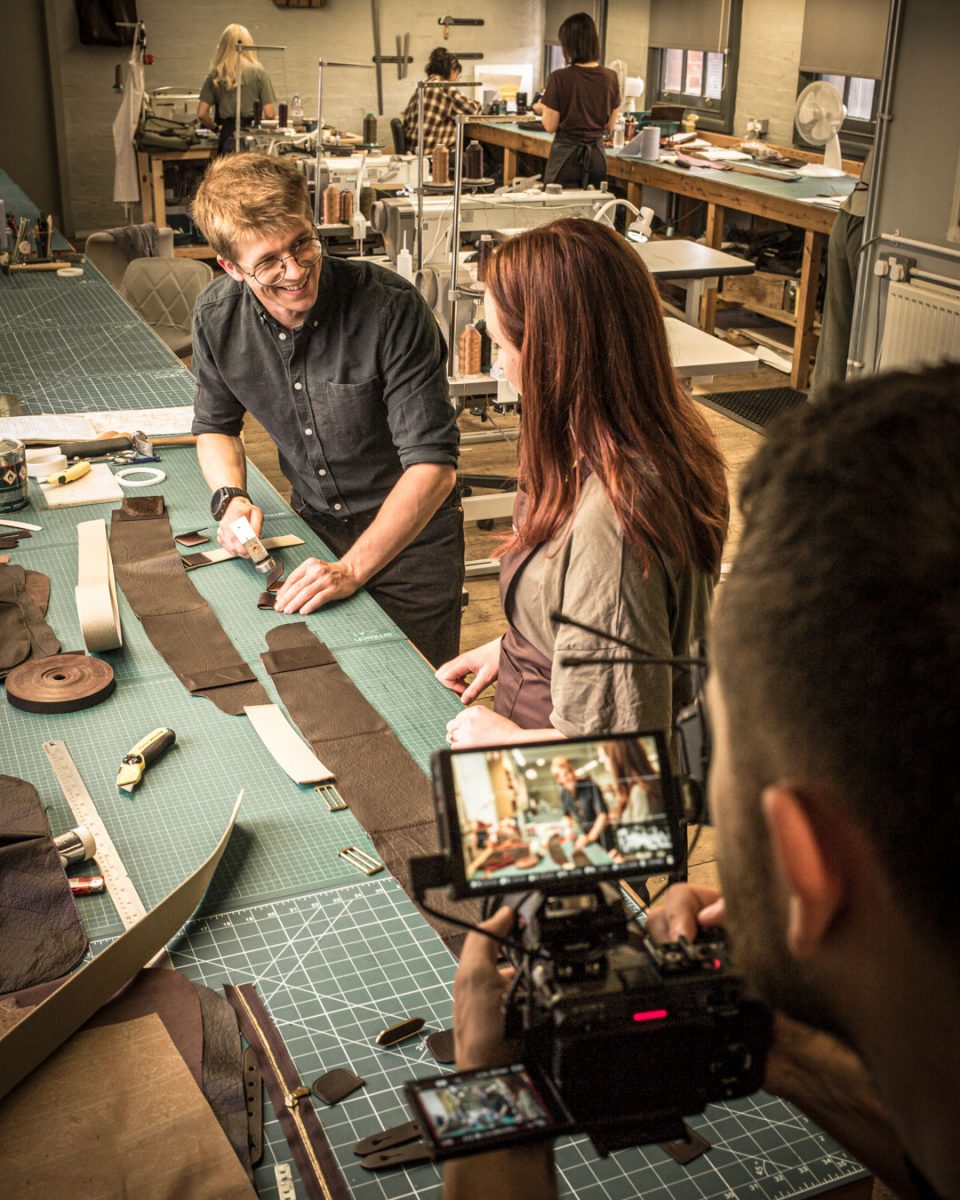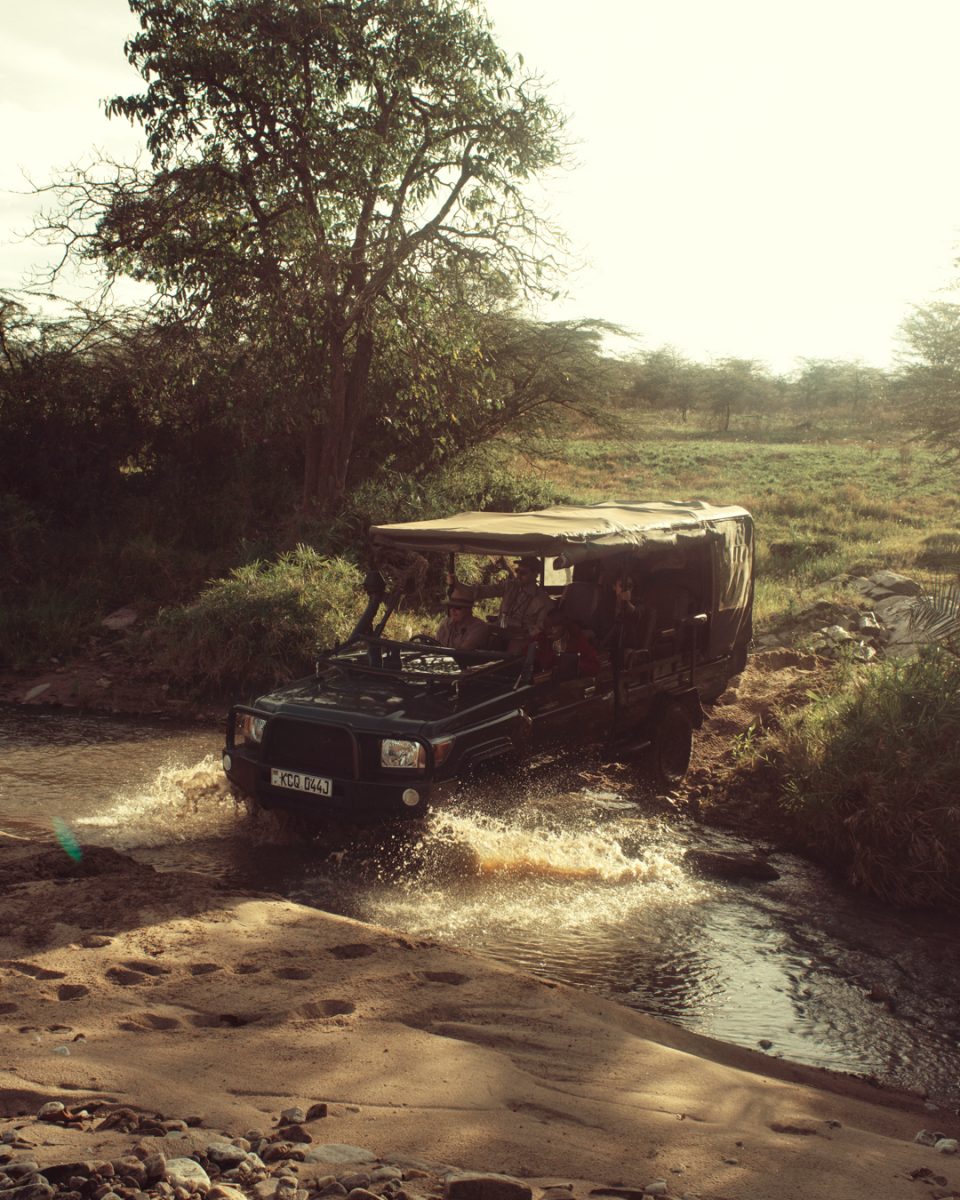A year or so ago, a very good client of ours purchased from a used gun dealer this .476 double rifle, it is a Gold Name model rifle made in the early 1900's. Having received it he then had problems getting it to shoot and so sent it across the Atlantic for us to have a look at.
The rifle had, unfortunately, been shot at some point with monolithic solid bullets which had pushed the rifling to the outside of the barrels rather than being on the inside. Worse still there was a hairline crack in the centre of the barrel, barely noticeable unless you look carefully, rendering them as scrap.
Whilst hugely disappointing for the client I was very pleased that he immediately thought of sending us the rifle to check, rather than load and try to get the rifle to shoot himself. The barrels were totally unsafe and the crack could at any point have opened up and potentially caused injury.
I have come across quite a lot of old rifles which have been shot with the wrong ammunition, and whilst I will not say this is a common problem, it is not uncommon either. When you are buying a double rifle ( or shotgun in fact) the barrels are the most expensive item to replace and it is worth thinking a vintage gun is only as good as its barrels. Spend the time to check them or have someone check them for you. It is possible in the case of the rifle to see the rifling on the outside if it has been raised by the wrong solid use, hold the barrels to the light and look up the outsides and you can see the feint twist of the rifling. This is perhaps easier said than done but worth remembering to check or ask someone to check for you! The penalty is a bill for in excess of $20,000 for new ones!



















Larry on December 2, 2015 at 9:48 am
It's great that this rifle was brought back to life; albeit with a hefty cost! Was it regulated with the original 520gr bullets (I believe this is what the cartridge originally came with, right?). Did you use the original sights or are those new as well?
Simon Clode on December 2, 2015 at 4:40 pm
New .476 ammo as original and new sights.
vancedaigle on December 2, 2015 at 10:31 am
Morning Simon,
What bad luck for this Gentleman, on many levels. I ask, if owning a vintage rifle that the bores have been inspected and have passed muster. Is there a certain type of ammunition that you can recommend that works better for these Ole Work Horses? I find this a very interesting story and of course want to try to keep the originality of any vintage Double rifles I may have, or purchase in the future. I very informative topic Simon, Good to have you back!!
In Christ
Vance,
Simon Clode on December 2, 2015 at 4:43 pm
Certainly was very bad luck! We have always shot the Woodleigh bullets in the old rifles, their original bullets were as near a copy of the old Kynoch as possible. They do now make other solids which I think are safe in the old rifles but have not shot myself. I can show you how to check the barrel in Dallas!
Neill Clark on December 2, 2015 at 2:31 pm
A prime example of why I like this blog, I learn so much from it. I was not aware it was possible to damage rifle barrels in this way, and I cringe when I think what could have happened. Thanks for the post, and I imagine your Client is very please with the new barrels.
Ashok Rajasingh on December 7, 2015 at 2:40 pm
I am sure your company has great credibility as a top gun maker for over 100 years. I am also sure you have a lot of experience in the matter.
I am just confused and perplexed that this has happened with a new rifle with modern steel etc.
If you read the work done by Michael & Sam on Accurate reloading site, http://forums.accuratereloading.com/eve/forums/a/tpc/f/760101804/m/1201069141/p/1
you will find that modern Mono metal bullets actually have lower barrel strain and pressure! Their study over the last 7 years and shooting hundreds of thousands of bullets shows that highest pressures are from lead bullets!
The thread on terminal performance of bullets is over 300 pages - http://forums.accuratereloading.com/eve/forums/a/tpc/f/4711043/m/2861098911 and is a great source of information.
I personally have 2 comments / opinions on the matter. Firstly did the shooter reload a .483 bullet by mistake in the rifle? That could have been the problem. I cannot envisage a mono metal bullet of the right caliber cracking the new modern steel barrel. Sorry, but it just does not make logical sense to me. A brass alloy bullet with grooves / bands must displace brass into the grooves as brass is far softer than barrel steel.
Secondly, there is little difference in profile of a double or a single barrel in terms of the individual barrel dimensions of breach & wall thickness etc. In fact the doubles generally seem to have thicker breach and barrel wall thickness. How then do we not see OSR in single barrel rifles?
I have shot with Sam and some of his doubles. He has shot / tested many many double rifles and several thousand rounds in the last 7 or 8 years since he first designed the CEB #13 solid by turning it on his lathe. Sam is the first one ever to shoot an elephant with a CEB #13 solid bullet.
Simon Clode on December 7, 2015 at 3:11 pm
It is a long discussion, but I am afraid I have seen this type of thing happen on a number of occasions. Firstly we must be clear that the barrels were not new, they were 100 years old, then, as a result of the problem we fitted new barrels.
I have unfortunately no idea what bullet was used, neither size or make.
Double rifles (generally) have a thinner barrel thickness than single barrel rifles, the breach is heavier but the centre to muzzle walls will be thinner.
I think the fact the barrels were old not new will perhaps lift your confusion.
Thank you for your information and comments.
Simon
Ashok Rajasingh on December 7, 2015 at 2:53 pm
An added point - Barnes & CEb bullets are 0.001 inch smaller than groove diameter so that barrel strain is within limits. Early Barnes bullets from around 1995 had problems with high pressure & barrel fouling. They then introduced the "bands" design.
The driving bands are a proven method of reducing pressure, displacing bullet metal and also reducing fouling.
Simon Clode on December 7, 2015 at 3:14 pm
I have made it clear on the post now that it was an old rifle. Thanks for pointing that out.
Woody Cotterill on December 11, 2015 at 12:12 am
Dear Simon, thank you for sharing this coverage of new life for a fine old rifle; and raising the profile of yet another classic calibre designed by the legendary Leslie Taylor. I am sure you've heard about the reputation of the .476 - its performance is rated close to the .500 3". Sadly, not many interested in the big bores even know of the calibre apart from a glance at old ballistics tables.
The omission of the .476 from formal coverage in Pierre van der Walt's recent book African Dangerous Game Cartridges is sad, especially with so much sensationalized coverage of wildcats, including a couple of homegrown .450s and the hyperbole given to the likes of the .470 Capstick etc.
Ironically, compared against the traditional ballistics of the .470 family, the .476 WR brought out a heavy-for-calibre bullet (520gr) nearly a century before the solution came into vogue. (The other cartridges in the 470 family sport a 480-500 gr bullet, obviously with double rifles regulated for said bullet.) The recent interest in a weightier projectile grew out of interesting hunting experiences in Zimbabwe, not least on pachyderms in the jesse thickets. Before its commercialization in Norma's PH range of heavy-for-calibre ammunition, Kevin Robinson was the pioneering protagonist of this solution (see Africa's Most Dangerous. Safari Press - Kevin's authoriative chapters on bullets and rifles for buffalo).
Rhino Bullets and Stewart Bullets in S Africa produce such projectiles of fine quality - e.g. a 450gr for the .416 and 350gr for the .375H&H. It is good to see Woodleigh embracing the shift to heavy-for-calibre bullets, and above all in a bullet they state to be kind on older rifles with barrels of softer steel. In the case of the .476, all's there as a bonus in the production of the Woodleigh 520gr (the cartridge's original weight) in soft and solid!
The subject of negative impacts on older doubles firing modern monometal bullets is covered in Graeme Wright's remarkable book 'Shooting the Double Rifle'. More recently, it is mentioned in the new 'Woodleigh Bullets Loading Manual' [ISBN 978 0 646 923382 6]. This coverage includes the new Hydro solids (actually a hybrid bullet judging by its terminal ballistics). This is exemplified in impressive penetration, as revealed in actual tests on pachyderms (using latter term for any large mammal with thick dermis).
This new book by Woodleigh is an excellent resource for any aficionado of classic rifles. It holds many more nuggets besides reloading data. The sections on bullet testing and performance, and the history of the company's quest for reliable hard-hitting bullets are required reading for anyone serious about big game hunting. The critical testing was lead by Dave Lindner in N Territory on asian buffalo. Quite simply, one has to read the book....which includes a chapter on origins and testing and commercial production of the Hydrostatically Stabilized Bullet by its designer, the metallurgist John Marozzi.
The performance of this new Hydro bullet in a .476 WR - exploiting the virtues of the regulation 520 gr - can only be impressive. It can only bring new life to this classic cartridge, and can only underscore its solid reputation.
Simon Clode on December 11, 2015 at 6:06 am
Thank you Woody for such a comprehensive comment, one which I am sure will interest many.